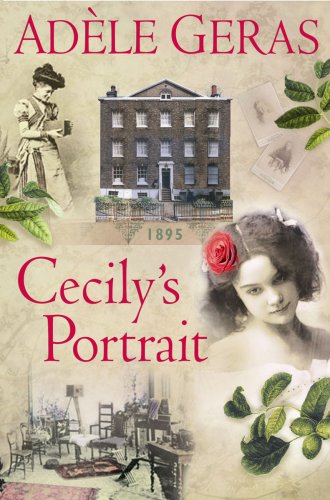Cecily’s Portrait
(1)
London, 1895. When 12-year-old Cecily Bright meets Miss Rosalind Templeton, a professional photographer, she is fascinated by her new friend’s job. She loves the way photography freezes a moment in time and admires Rosalind’s skill in manipulating the light and background to the best advantage. She longs to take photographs herself.
Since her mother’s death six years ago, Cecily leads a somewhat restricted life, and meeting Rosalind opens her eyes to new ways of looking at the world. It would be wonderful, she thinks, if her father should fall in love with and marry Rosalind. But her father’s friend, the dull and dowdy Miss Braithwaite, keeps getting in the way. To Cecily’s alarm, it increasingly looks as though he’ll marry Miss Braithwaite instead…
This is one of the 6 Chelsea Walk, Historical House series. In this quiet but charming tale, Geras looks at one of the new professional opportunities opening up for women – photography. We also re-meet Lizzie, from Geras’s earlier book Lizzie’s Wish, who has become a garden designer as real-life Gertrude Jekyll did at the same period.
Geras catches the social mores of the age well and offers her readers a glimpse into the restrictions expected of females. Cecily cannot visit Rosalind without her father’s permission, and he sees the Templetons (Rosalind’s father is an artist) as only just respectable. Mr Bright is something of a mid-Victorian paterfamilias, and Miss Braithwaite expects Cecily to conform to the ‘angel in the house’ view of feminine behaviour. Rosalind, however, is a nascent New Woman: she has her own career and she’s prepared to argue with her father about the validity of photography as an artistic medium.
Modern girls might find this story a touch quiet, but it certainly illuminates the 1890s zeitgeist. For 10+.
(2)
Cecily’s Portrait is a book about a girl in England before the First World War who wants to be a photographer. It’s mainly about a woman she meets and that same woman’s relationship to Cecily’s father. It’s not a very eventful book and it’s told from Cecily’s perspective. I found it a bit dull, and I’m not sure that it would appeal to a younger age group either. Overall, it’s a rather slight book, but there were some descriptions of how photographs are developed which I found interesting.










